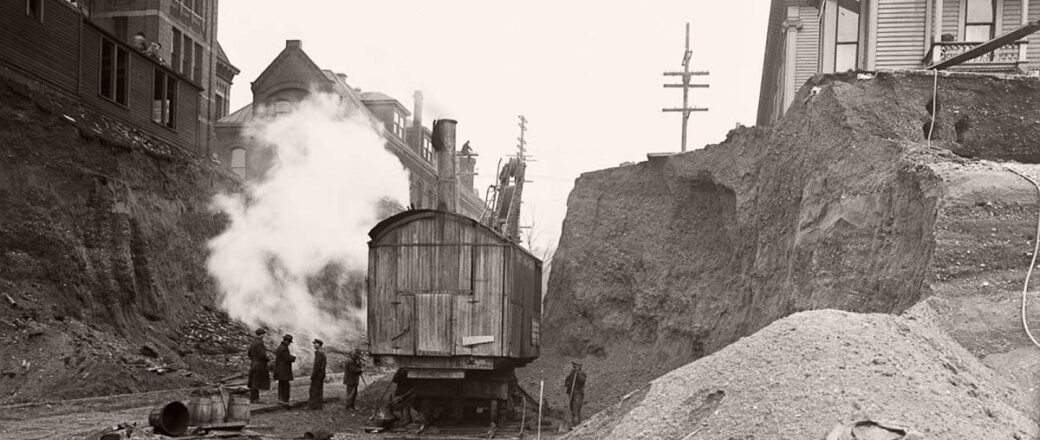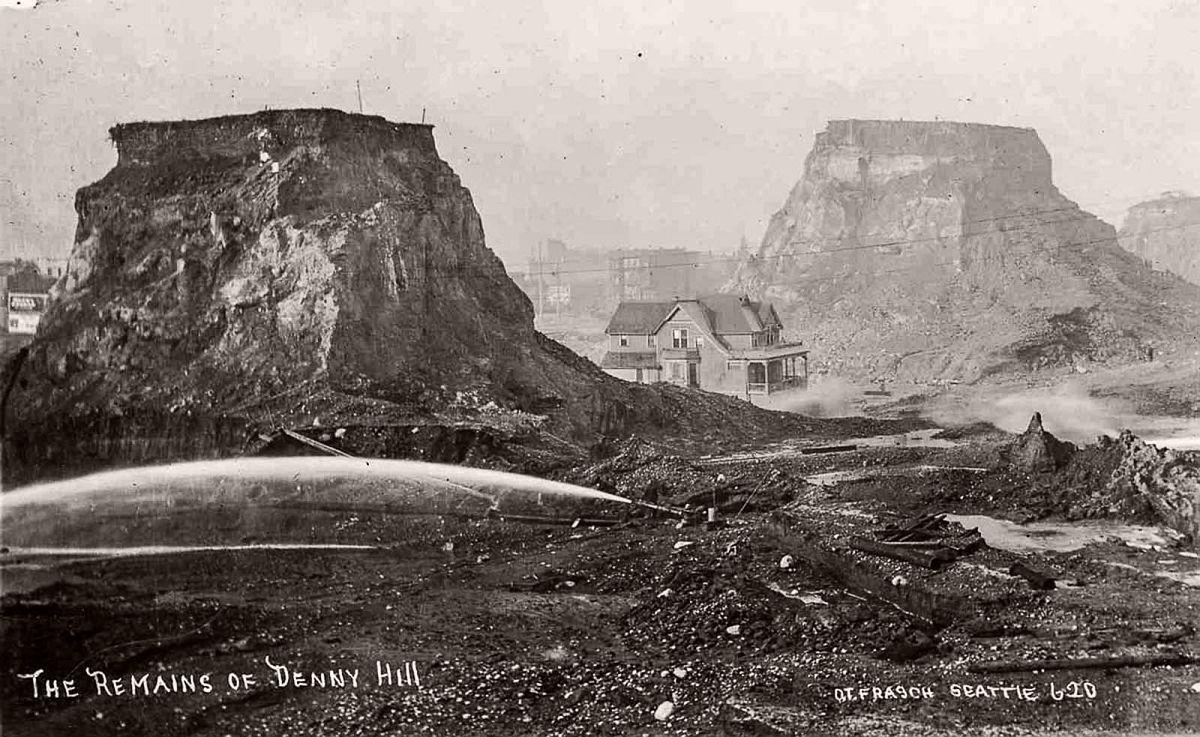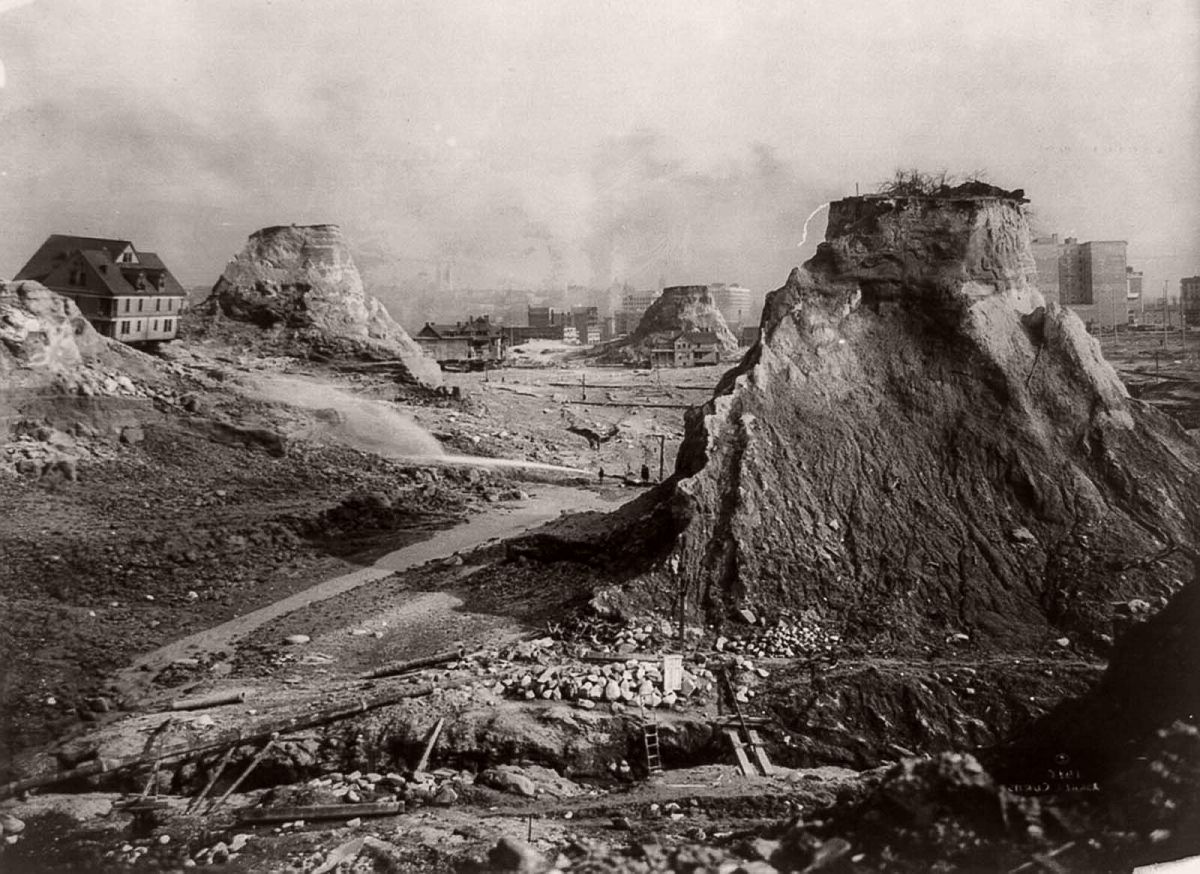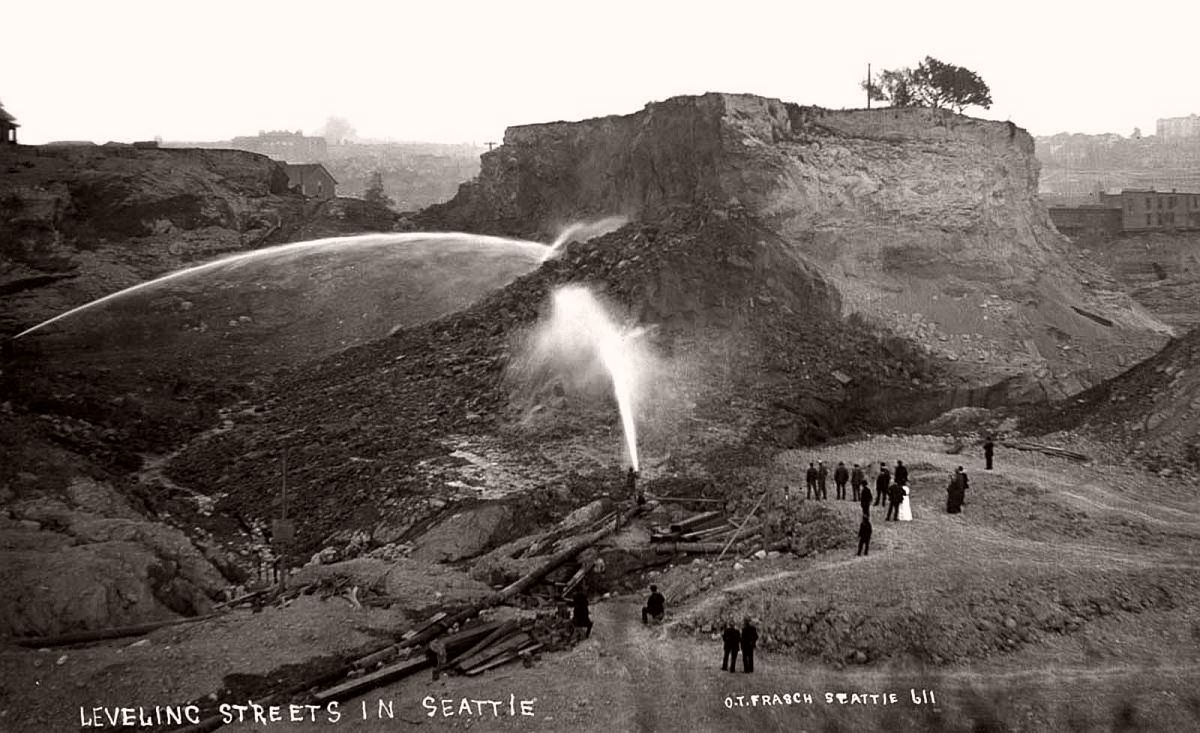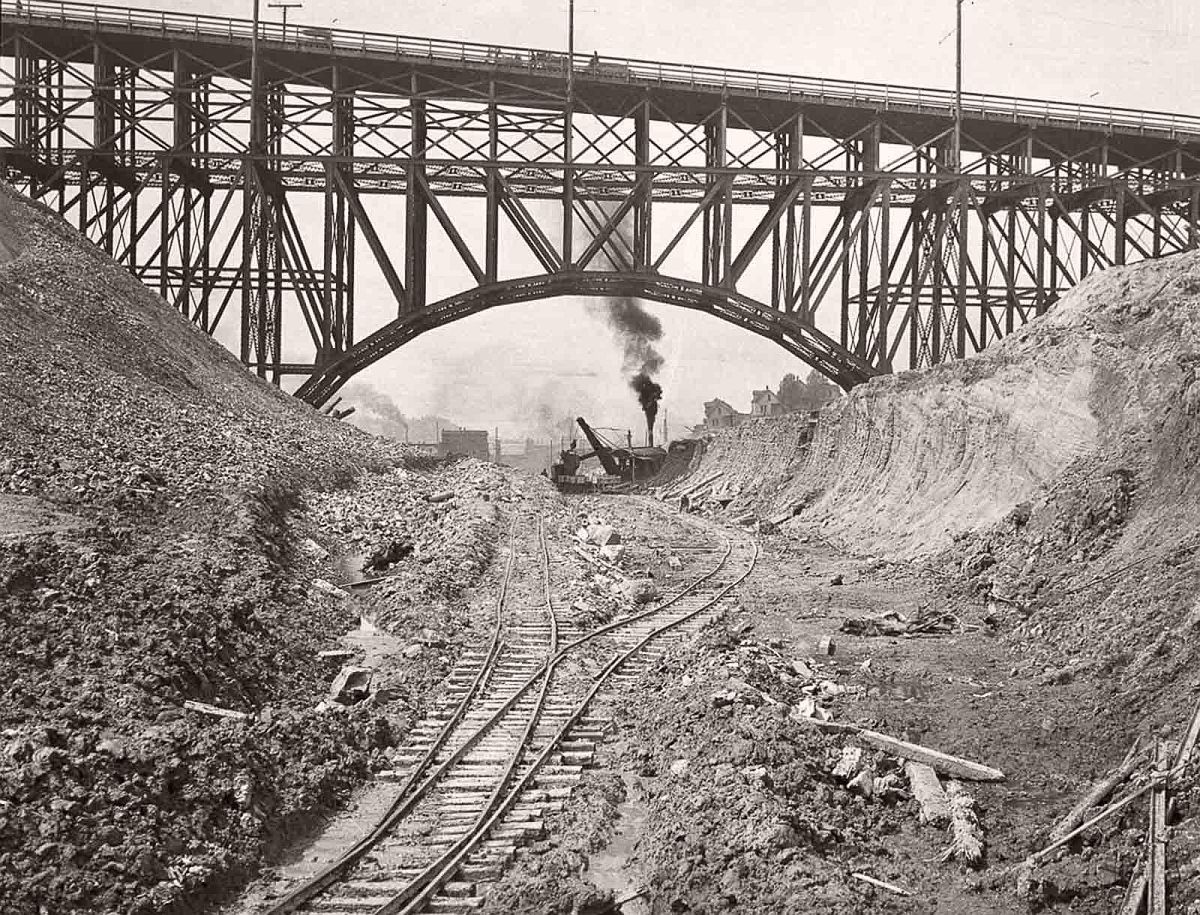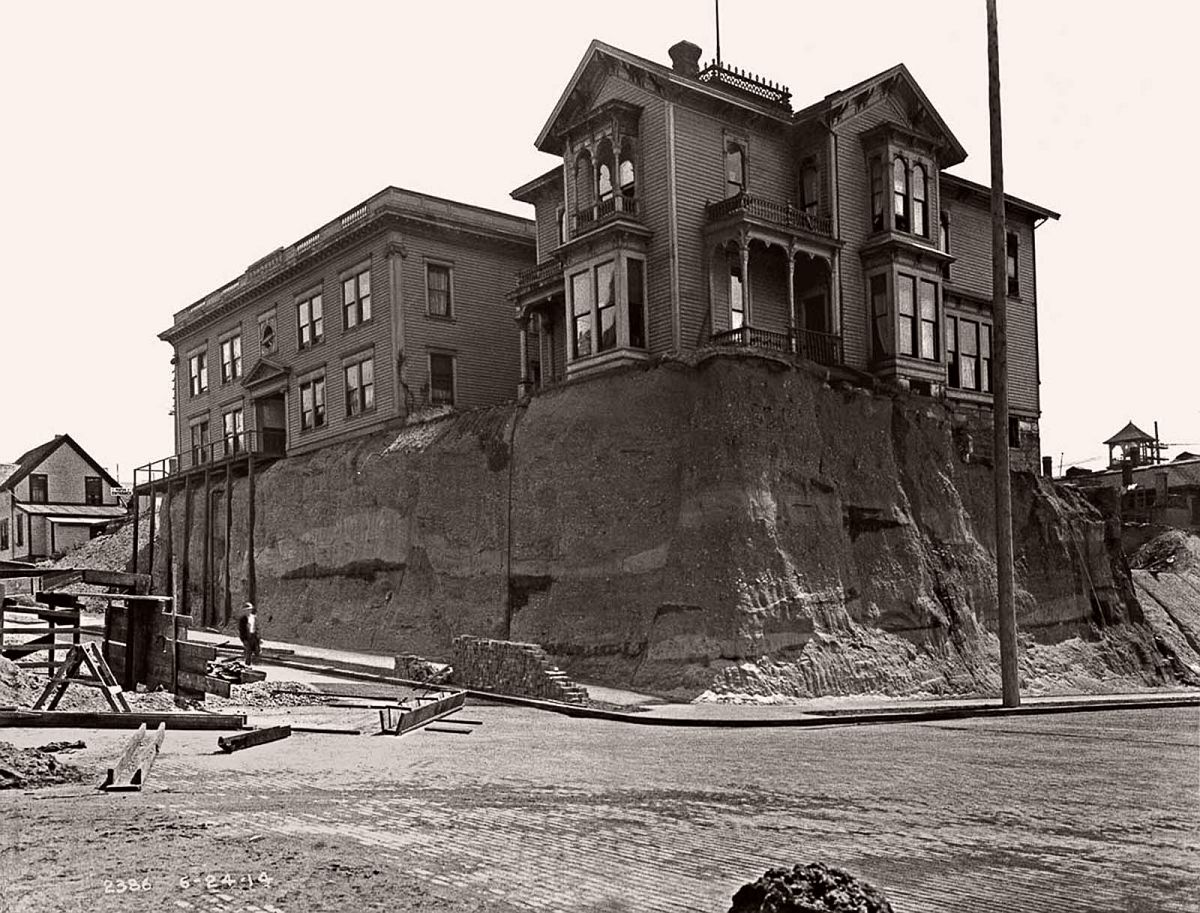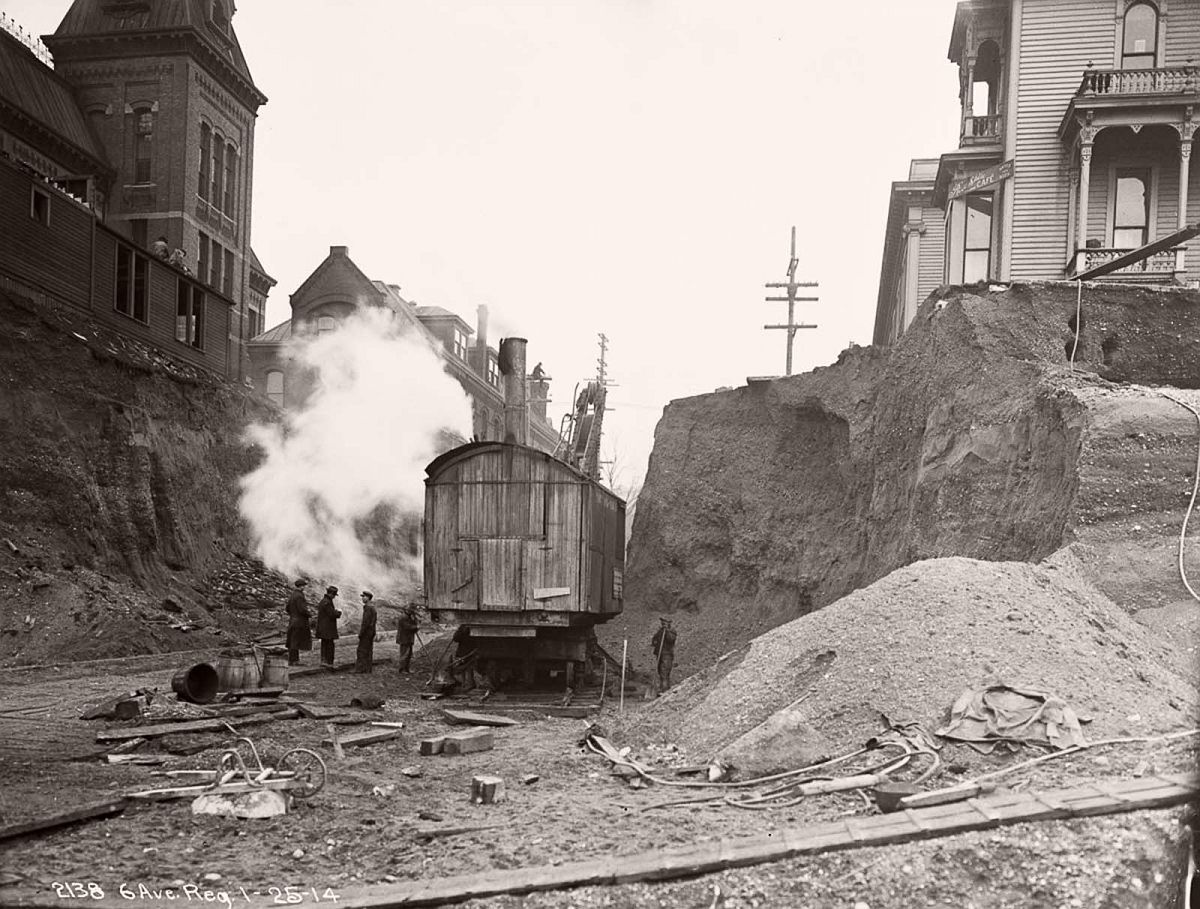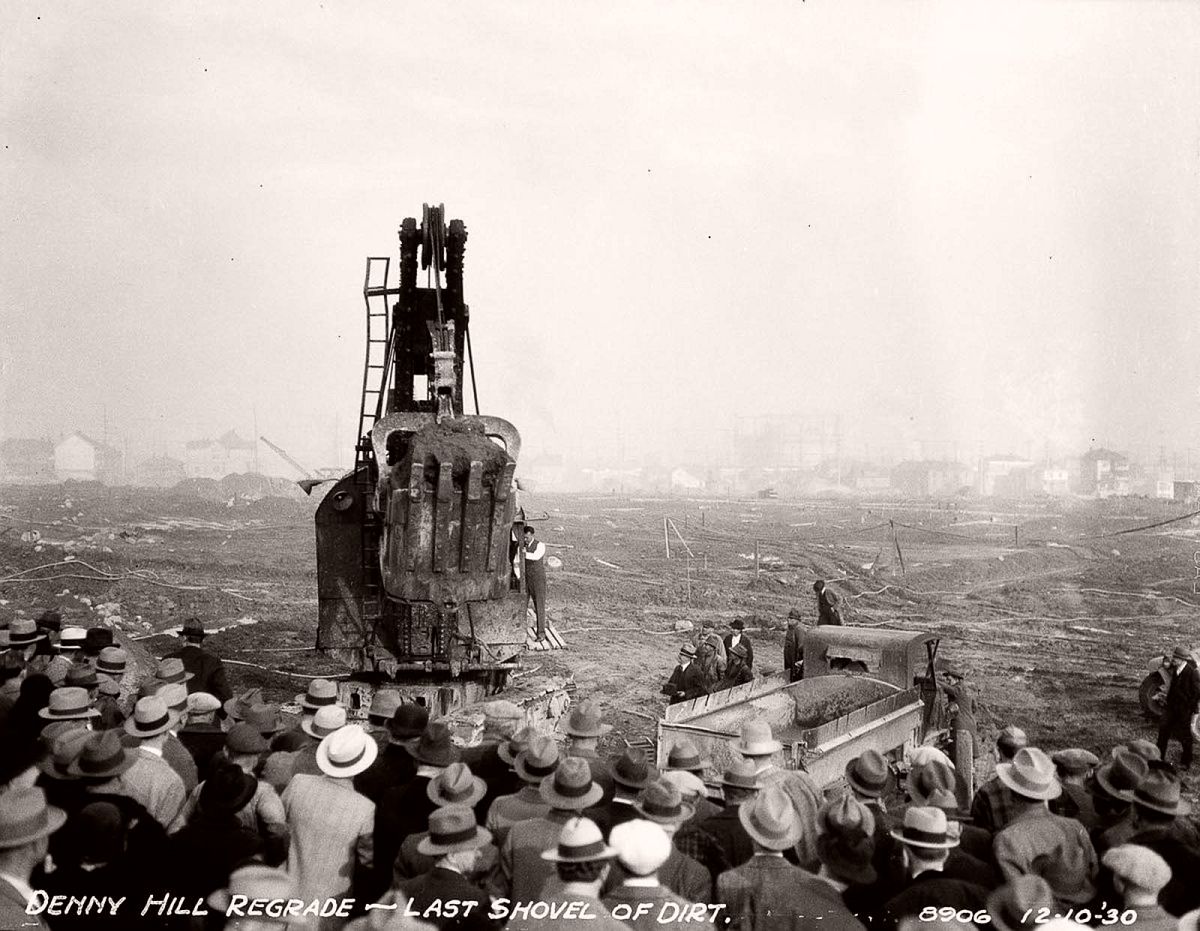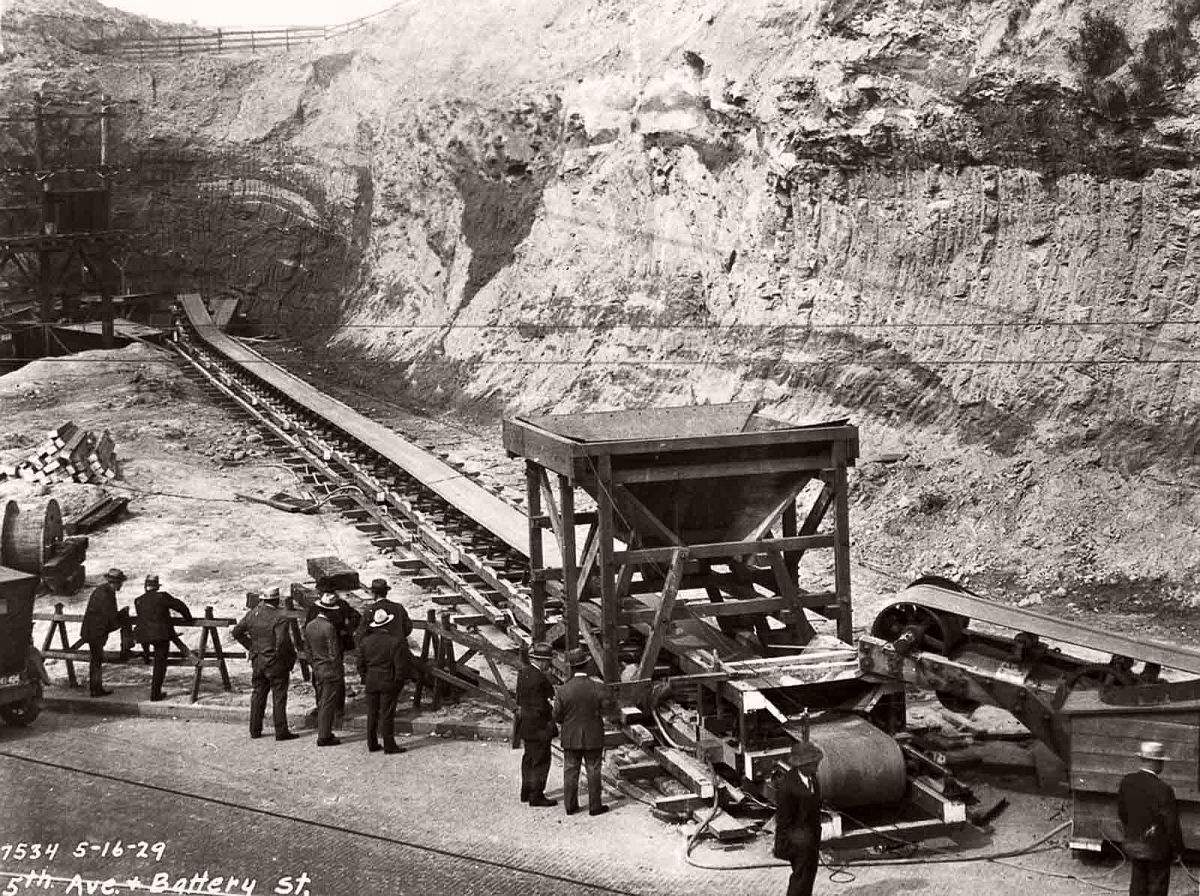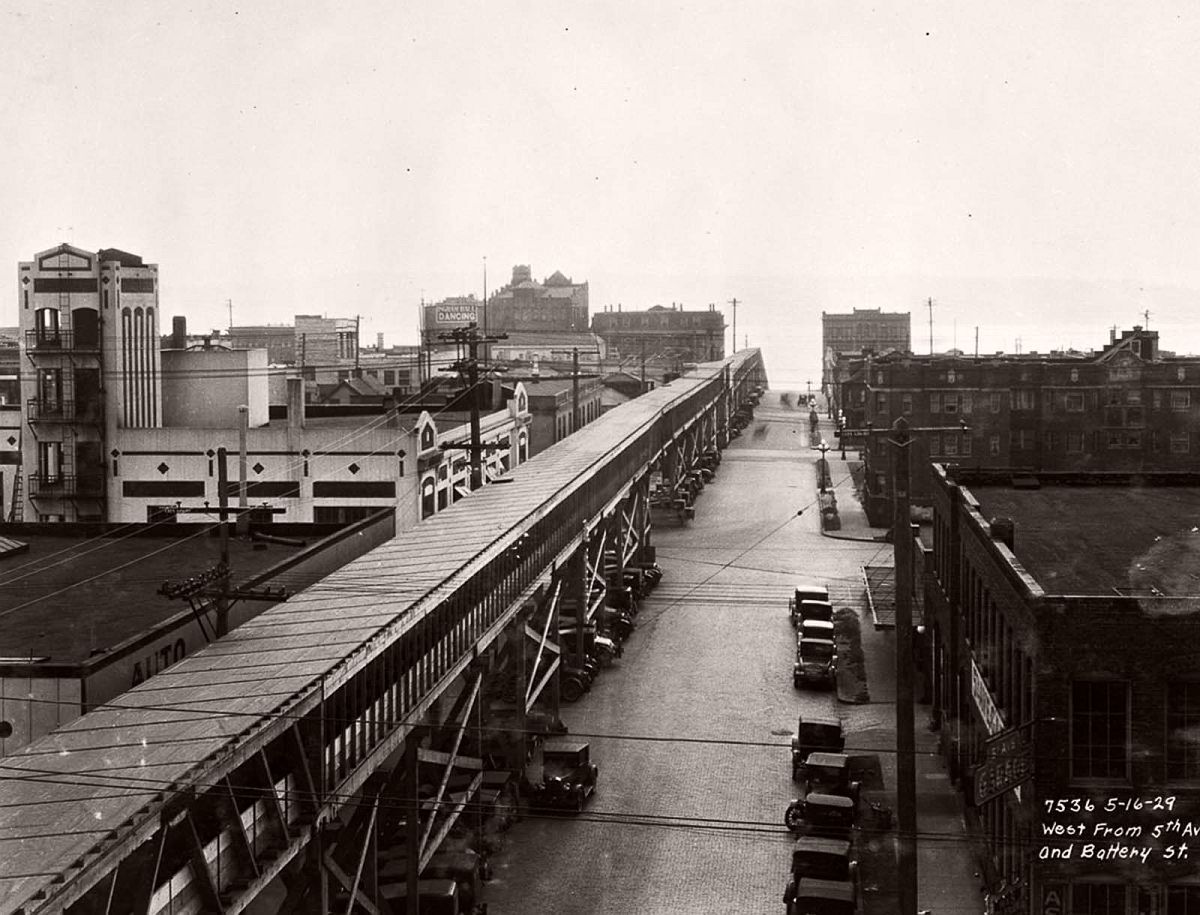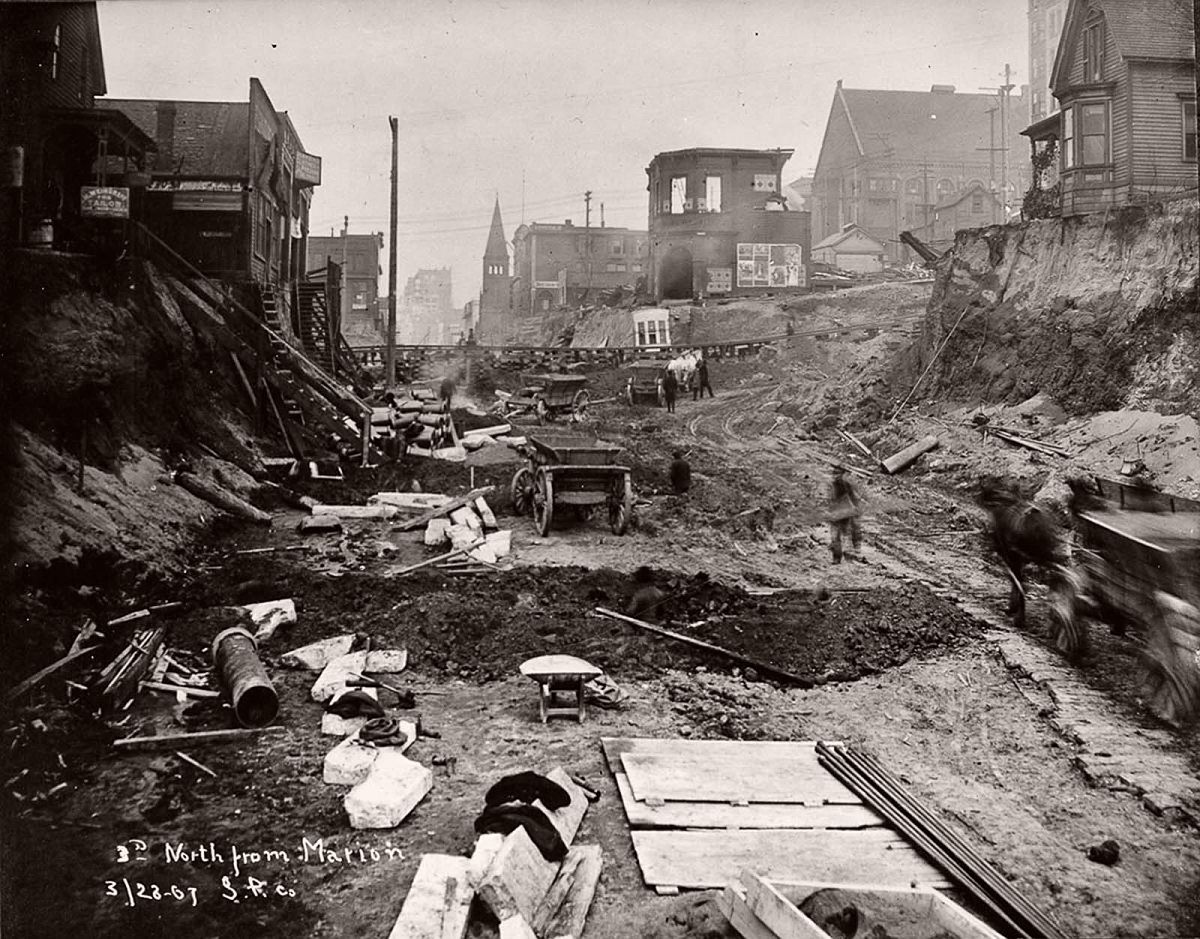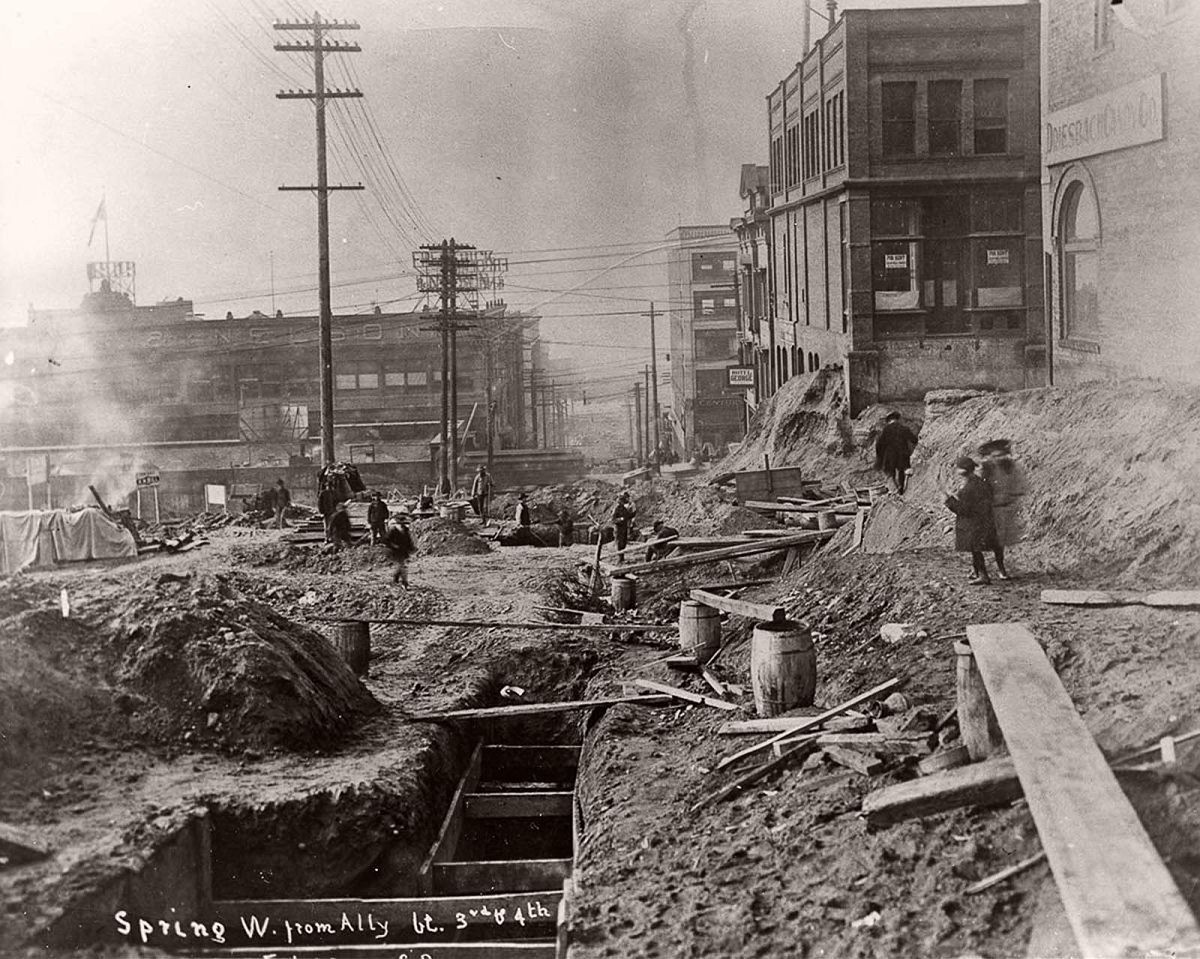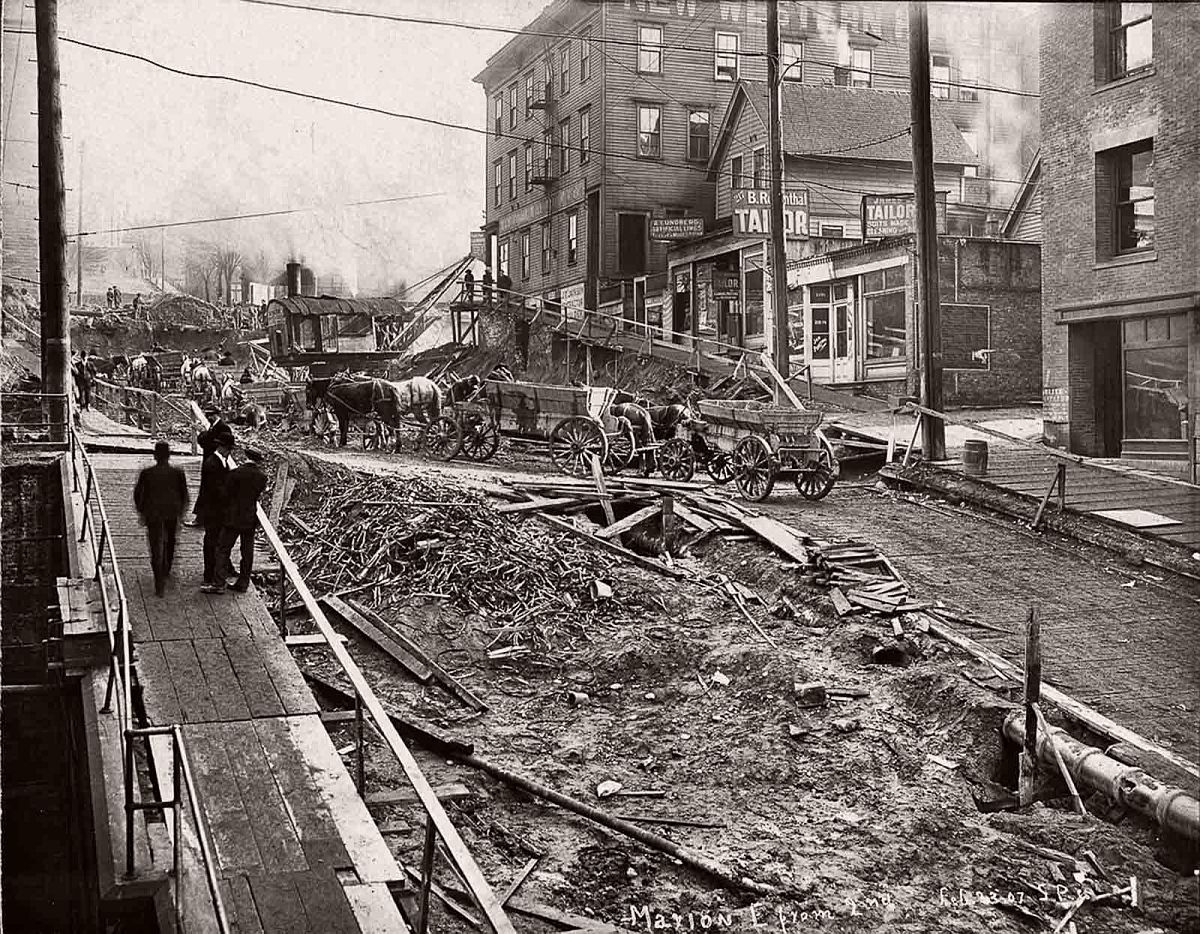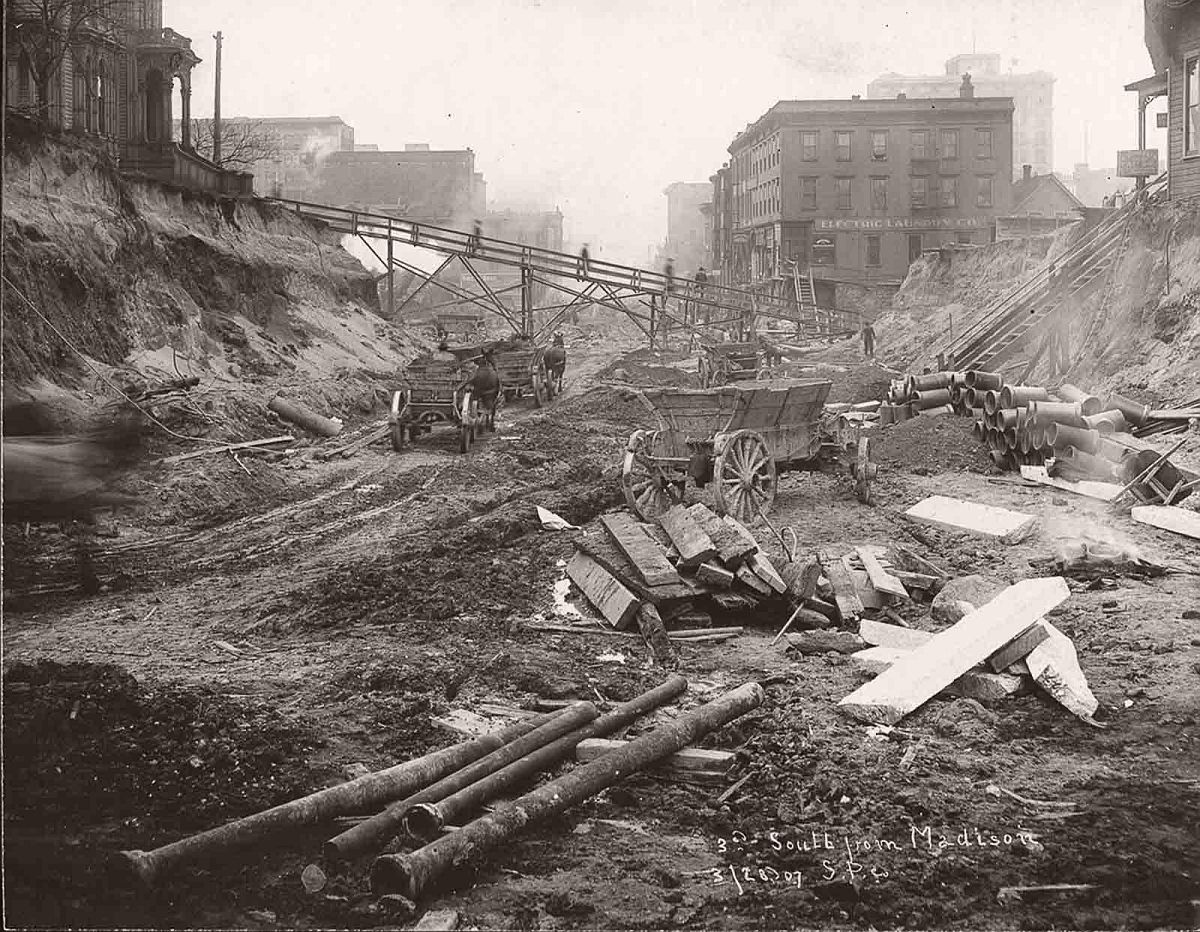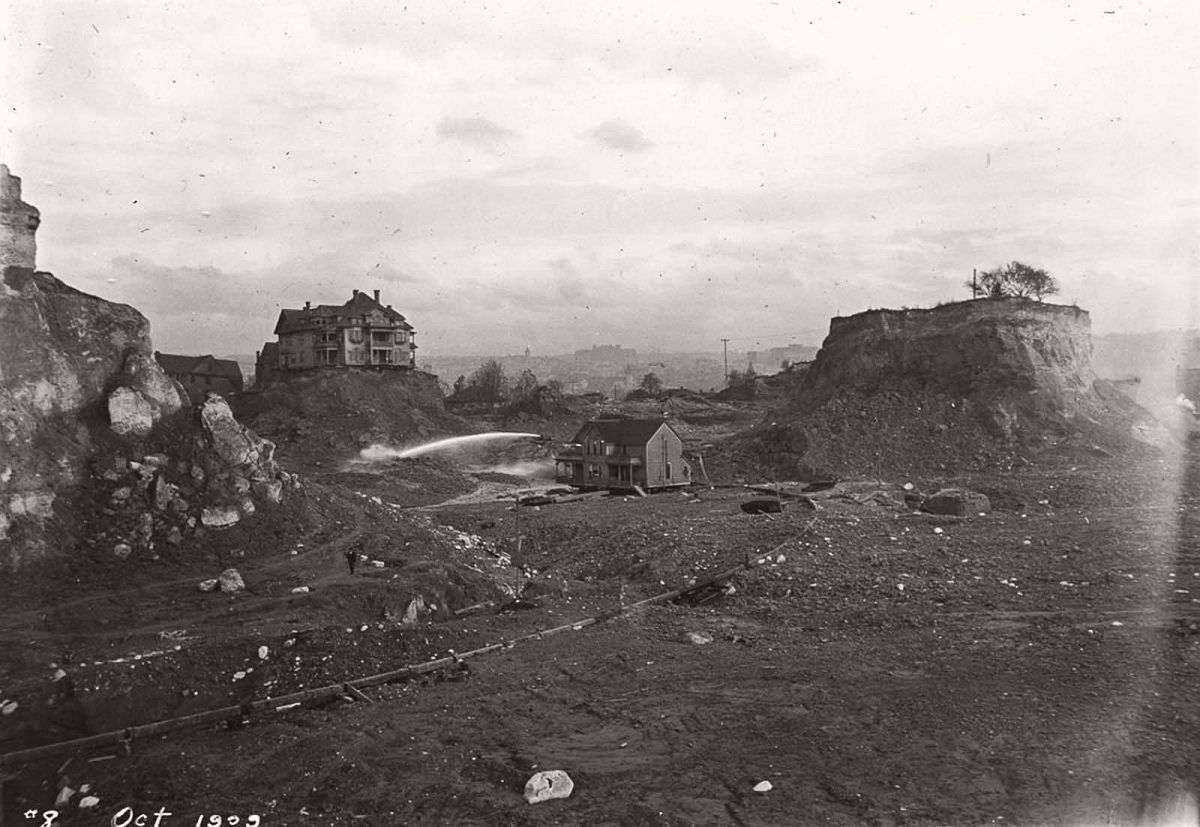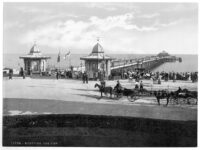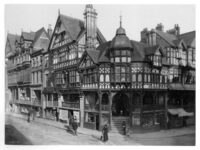Seattle’s first 58 regrades “consisted largely of cutting the tops off high places and dumping the dirt into low places and onto the beach”. The most dramatic result of this was along that former beach, filling the land that constitutes today’s Central Waterfront. Today’s Western Avenue and Alaskan Way lie on this landfill.
These informal regrades came to an end around 1900; later regrades typically required changes to areas that had already undergone some development. City engineer R.H. Thomson established his prestige in 1900. He successfully provided the city with ample fresh water by running a pipeline from the Cedar River. He then undertook to level the extreme hills that rose south and north of the bustling city center. A central concern of Thomson’s work in Seattle was to connect disparate parts of the city together, allowing easier movement. Thomson was quoted as saying that the city had developed the land “with but little regard as to whether the streets could ever be used or not, the main idea being, apparently, to sell the lots.”
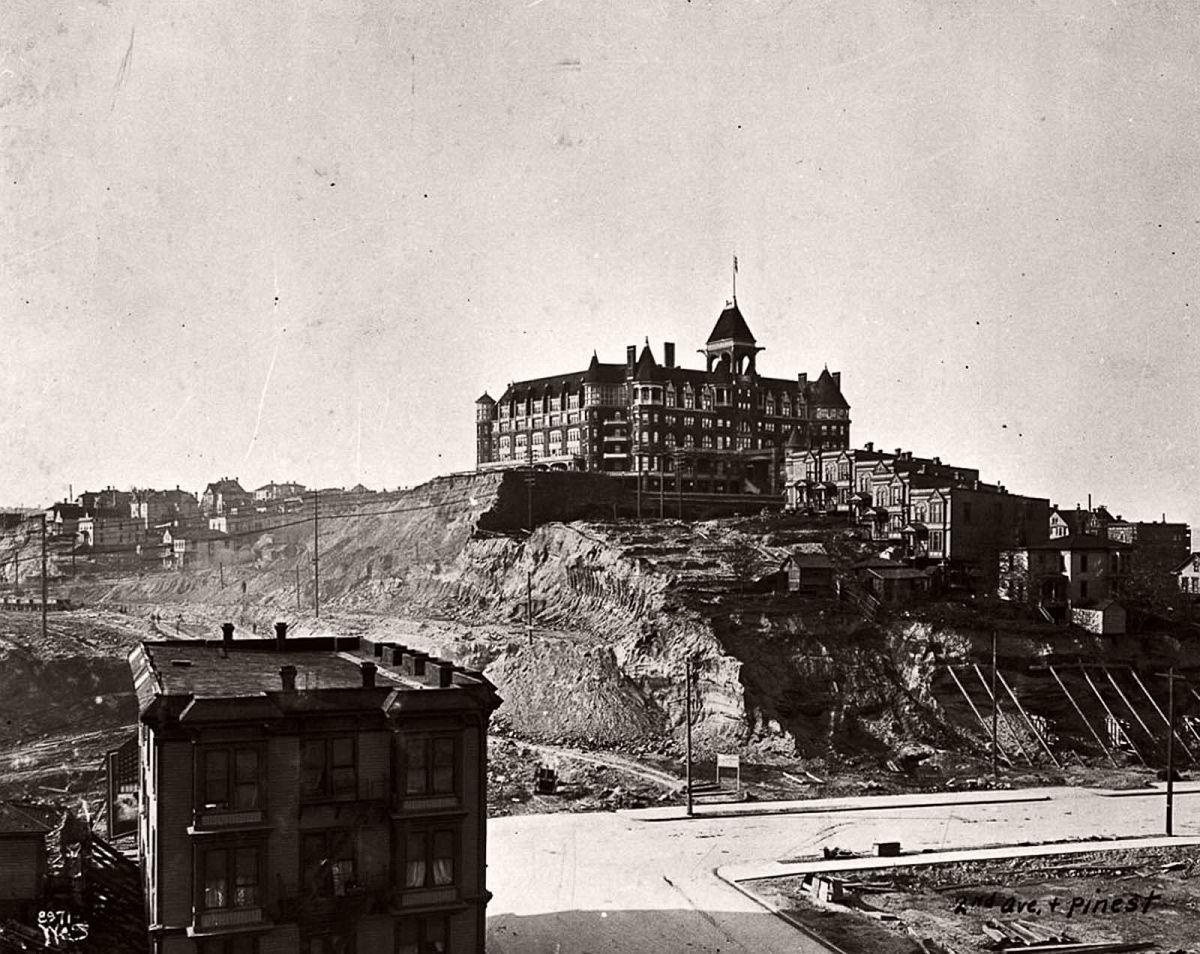
The Denny Hotel (later called the Washington Hotel) stands on the south summit of Denny Hill before being torn down. 1905.
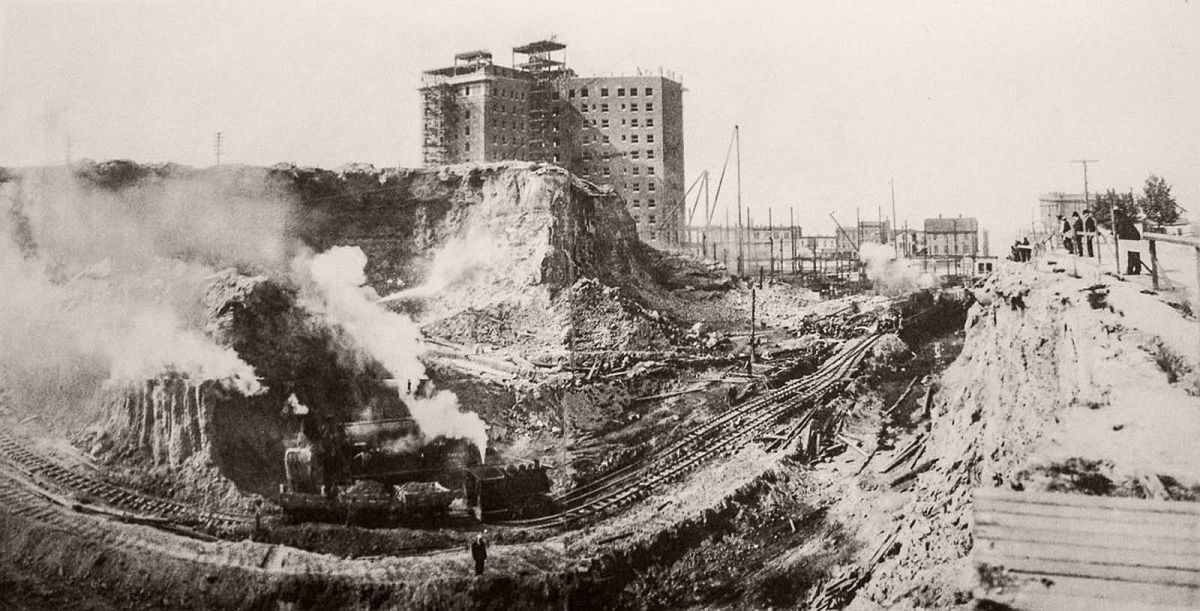
Trains move loose earth at the south summit of Denny Hill near the under-construction New Washington Hotel, at the corner of Second Avenue and Stewart Street. 1907.

